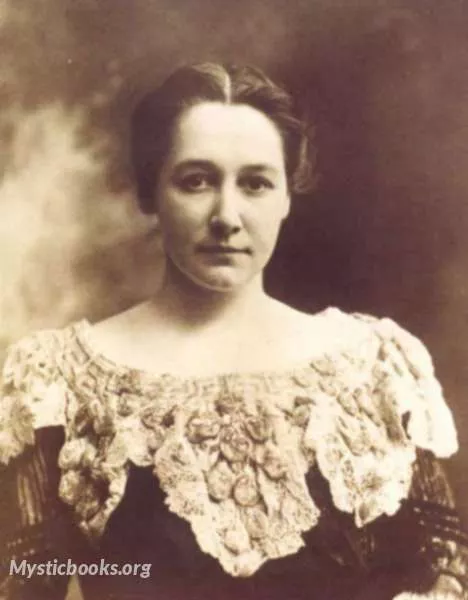
Timeline
Title
Country/Nationality
Enid Yandell
Enid Yandell was an American sculptor from Louisville, Kentucky who studied with Auguste Rodin in Paris, Philip Martiny in New York City, and Frederick William MacMonnies.
Yandell specialized in portrait busts and monuments. She created numerous portraits, garden pieces and small works as well as public monuments. The sculpture collection at the Speed Art Museum in her hometown includes a large number of her works in plaster. She contributed to The Woman's Building at the Chicago World's Fair.
Yandell was the eldest daughter of Dr. Lunsford Pitts Yandell, Jr. and Louise Elliston Yandell of Louisville, Kentucky. Her sister Maud Yandell (1871–1962) also never married; Elsie Yandell (1874–1939) married the American architect Donn Barber and moved to New York; and, their younger brother, Lunsford P. Yandell III (1878–1927) married Elizabeth Hosford of Connecticut and lived in Kentucky. Enid Yandell completed degrees in chemistry and art at Hampton College, a school for girls in Louisville. She then attended the Art Academy of Cincinnati, where she completed a four-year program in two years, winning a first-prize medal upon graduation in 1889. Yandell also took advantage of apprenticeships with noted sculptors of the day. These included Lorado Taft, Philip Martiny and Karl Bitter.
Yandell was one of a group of women sculptors known as the White Rabbits, who were organized by sculptor Lorado Taft to complete the numerous statues and other architectural embellishments for the Horticultural Building at the World's Columbian Exposition in Chicago in 1893. She also designed and carved the caryatid that supported the roof garden of The Woman's Building. Yandell co-wrote a semi-autobiographical account of her involvement in planning the fair, Three Girls in a Flat (1892). (This book is not to be confused with a British one of the same title by Ethel F. Heddle, published in 1896, a roman a clef featuring Ménie Muriel Dowie, Lillias Campbell Davidson, and Alice Werner, describing 'the ambivalent experience when the freedom of living alone collides with “the sordid, matter-of-fact worries incident on having very little money.”')
In 1894, Yandell went to Paris, where she studied with Frederick William MacMonnies and other instructors at the Académie Vitti in Montparnasse. Yandell also worked with Auguste Rodin. She returned to Paris frequently, maintaining a studio there and exhibiting at the Paris Salon.
In 1898 Yandell became the first woman member to join the National Sculpture Society. In 1899 her sister Elsie married the architect Donn Barber. Yandell died on June 12, 1934, in Boston, Massachusetts, and is buried in Cave Hill Cemetery in Louisville, Kentucky, Section O, Lot 396.
Sculptures by Yandell include a nine-foot statue of Daniel Boone. The Daniel Boone sculpture was commissioned by the Filson Club of Louisville. Yandell completed a plaster cast which was shown at several exhibitions before C. C. Bickel finally arranged to have the work cast in bronze for the city of Louisville in 1906. The Daniel Boone sculpture survived the Super Outbreak of tornadoes on April 3, 1974, and is now located in Cherokee Park, Louisville, Kentucky. Another casting of the Boone statue was made in 1967 and placed on the campus of Eastern Kentucky University in Richmond, Kentucky.
At age 27, Yandell was commissioned to create a monumental sculpture of Pallas Athena for the 1897 Tennessee Centennial and International Exposition. The Greek sculpture was in keeping with Nashville's nickname as "The Athens of the South."
Enid Yandell's sculpture the "Struggle of life" was commissioned by Italian diplomat Paul Bajnotti, of Turin, Italy, in memory of his wife Carrie Brown. Dedicated in 1899, the Carrie Brown Memorial (also referred to as the Bajnotti Fountain) is located in Burnside Park in downtown Providence, Rhode Island. She exhibited a plaster version of the fountain - then named "Struggle of Existence" - for the 1901 Pan-American Exposition in Buffalo, New York. The group of five figures was described in a contemporary journal article as "the struggle of the Spirit of Life to escape from the hampering influence of Duty, Avarice, and Passion." Yandell described the sculpture as representing "the attempt of the immortal soul within us to free itself from the handicaps and entanglements of its earthly environments."
In addition to her work as an artist, Yandell was committed to improving the lives of others. She contributed to the education of future artists by founding in 1908 the Branstock School in Edgartown on Martha's Vineyard in Massachusetts. The art school functioned for several summers until her death in 1934. Yandell also worked with Appui Aux Artists, an organization which provided affordable meals for those involved in the arts and their families.
Yandell was an active supporter of women's suffrage, offering her art in exhibits for fundraising efforts. She also campaigned for Calvin Coolidge in Massachusetts when he ran for office on a pro-woman suffrage platform in the early 1900s.
During World War I, Enid Yandell became involved with the Red Cross, and with a French organization for the care of war orphans, La Société des Orphelins de la Guerre. After returning to the United States, she served as director of the Bureau of Communications for the American Red Cross in New York, and as chair of the Women's Committee for the Council of National Defense. These activities consumed almost all her time; she largely gave up her work as a sculptor to help others.
Enid Yandell died in Boston on June 12, 1934. She was buried in Louisville, Kentucky, at the Cave Hill Cemetery with her family and next to her sister Maud.
Books by Enid Yandell

Three Girls in a Flat
Three Girls in a Flat, is a semi-autobiographical account of her work as a sculptor for the Horticultural Building at the World's Columbian Exposition in Chicago in 1893. Co-written with two friends, it's an episodic account of the trials and tribula...